What do cheetahs eat?
Online Biology Dictionary
EUGENE M. MCCARTHY, PHD
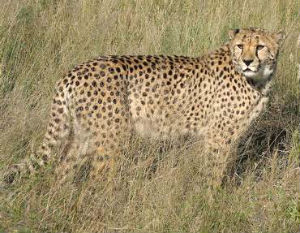
|
| Cheetah (Enlarge) |
What do cheetahs eat? Cheetahs are medium-sized cats that focus on prey that can be taken by speed. Typical cheetah diet consists mainly of gazelles, especially Thomson's gazelles. They also take on impalas and other small to medium-sized antelopes. Sometimes, too, they prey on the calves of larger animals.
Although a cheetah is big for a cat, they are not as big as leopards, jaguars, lions or tigers. In general, they weigh between only 20 and 70 kilograms (about 45–155 lbs). Most of their prey weighs less that 40 kg (~88 lbs).
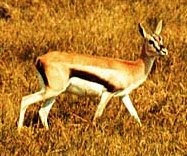 Thomson's Gazelle
Thomson's Gazelle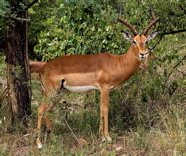 Impala
Impala
Cheetahs are the fastest land animals, capable of short sprints as fast as 120 km/h (75 mph). Typically, cheetahs go two or more days between kills, but females with young will try to take at least one gazelle a day. They differ from other cats in their method of hunting. Cheetahs don't ambush or sneak within springing distance.
Instead, they approach their prey, typically in plain sight, to within about a hundred meters. Then, suddenly, they charge all out. If they overtake their victim, they bowl it over and strangle it with a bite to the neck.
But their prey often escapes. Moreover, even when they are successful, they often have to abandon their kills to lions, or even hyenas, since they aren't really big enough to put up a fight. What do cheetahs eat when they're down on their luck in this way? Mostly, they survive by taking small prey — rodents, birds, lizards, even insects — until bigger prey is available. Like most animals, they aren't too picky when they're hungry.
What do cheetahs eat in zoos?
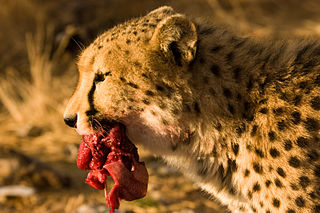 A cheetah eating lunch. Image: Greg Willis
A cheetah eating lunch. Image: Greg Willis
Cheetah diet:
-
Natural: Thomson's gazelles, impalas.
- Zoo: Often horse meat. Also beef, chicken and rabbit. Meat-based feed.
Related articles:
Generally, in zoos cheetahs eat various ground meats, particularly, horse meat, which is less expensive since it is in less demand for human consumption. But they are also fed beef, chicken and rabbit. Many zoos use commercial meat-based feed made specifically for cheetahs in captivity. Like other mammals, cheetah cubs live off milk. They only begin to eat meat when they are about six weeks old.
Cheetahs are disappearing
According to the IUCN, cheetahs have disappeared from more than 90 percent of their historic range. They still occur widely, but sparsely, in Africa, but even there they have disappeared from three-quarters of the areas where they were formerly present.
The cheetah once occurred throughout much of Asia. Thus, within the last century it was present from the shores of the Mediterranean and the Arabian peninsula, north to the northern shores of the Caspian and Aral Seas, and west from Uzbekistan to India. They have, however, largely disappeared from these regions, in part because of live captures, since they were used as hunting animals by the aristocracy. But the main reason has probably been declines in wild populations of the various animals they formerly preyed upon, especially gazelles.
There has also been considerable direct killing of cheetahs in Asia, and commercial development of their habitat. Today, wild Asiatic cheetahs survive only in Iran, where they are critically endangered. There is some chance that small numbers may survive, too, in Pakistan and Afghanistan, but they are probably extinct in both those countries.
Big cat hybrids:
Lion-leopard hybrids
Leopard-tiger Hybrids
Jaguar-leopard Hybrids
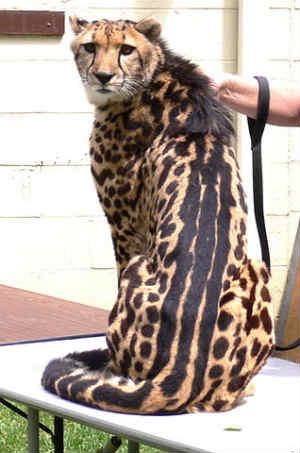 A Leopard-cheetah hybrid?
A Leopard-cheetah hybrid? Chicken-pigeon hybrids?
Chicken-pigeon hybrids?